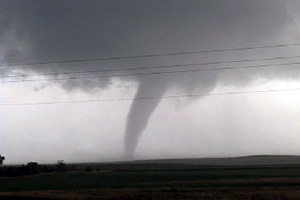Plains Punished: The August 24th, 2006 Tornado Outbreak in Minnesota and South Dakota

The date was August 24th, 2006. While most of the nation basked in the waning days of summer, residents of Minnesota and South Dakota were about to experience a meteorological event that would forever be etched in their memories. This seemingly ordinary Thursday transformed into a day of chaos and destruction as a series of tornadoes ripped through the region, leaving behind a trail of devastation and forever altering the lives of those impacted.
The morning began with an atmosphere pregnant with potential. A warm front stretched across the region, ushering in a surge of warm, moist air from the Gulf of Mexico. This unstable air mass provided the fuel for thunderstorm development, while a potent upper-level disturbance lurking to the west provided the necessary spin and energy to set the stage for a dramatic meteorological performance.
By early afternoon, the atmosphere’s volatile energy began to manifest. The first tornado, a relatively weak EF0, touched down near Wilmont, Minnesota, around 2:30 PM. This was merely a prelude to the main event. Over the next several hours, a staggering 27 confirmed tornadoes pirouetted across the region, carving paths of destruction through the landscape. These twisters ranged in intensity, with some causing minor damage while others, reaching EF3 status, packed winds up to 165 mph.
One of the most destructive tornadoes, an EF3, began its rampage near Chandler, Minnesota, around 4:30 PM. It tore through Murray and Pipestone counties, leaving a 38-mile scar across the land. Homes were reduced to splintered remnants, trees were ripped from the earth, and power lines lay tangled and broken. The town of Ruthton bore the brunt of the tornado’s fury, with numerous homes and businesses suffering significant damage. Tragically, this tornado claimed one life and left several others injured.
As the evening progressed, the storms continued their relentless assault. Around 7:00 PM, an EF2 tornado touched down near Lake Wilson, Minnesota, carving a 17-mile path of destruction through farmlands and rural properties. While no fatalities were reported, several individuals sustained injuries. Later that evening, around 7:30 PM, an EF1 tornado touched down near Tyler, Minnesota, causing damage to trees, power lines, and several structures.
The meteorological ingredients that fueled this tornado outbreak were a textbook example of nature’s fury. The warm, moist air from the Gulf of Mexico provided the instability necessary for thunderstorm development, while the strong jet stream winds aloft provided wind shear, the change in wind speed and direction with height that causes thunderstorms to rotate. The approaching upper-level disturbance acted as a trigger, lifting the unstable air and initiating the development of supercell thunderstorms, the breeding grounds for tornadoes.
Specifically, on this day, a tongue of warm, moist air surged northward ahead of the warm front, colliding with cooler, drier air aloft. This clash of air masses created an environment conducive to the rapid rising of air parcels, the building blocks of thunderstorms. The strong jet stream winds interacted with these rising air parcels, creating horizontal rolling tubes of air. When tilted vertically by the updraft, these tubes spawned rotating thunderstorms, or supercells. The approaching upper-level disturbance then provided the necessary lift, forcing the unstable air to rise and giving birth to the monstrous supercells that spawned the tornadoes.
The August 24th tornado outbreak serves as a stark reminder of the awesome and often unpredictable power of nature. By understanding the specific meteorological factors that contributed to this event, we can gain a deeper appreciation for the complex dance of atmospheric elements that can lead to such destructive consequences. While we may never be able to fully control the weather, we can certainly strive to be informed and prepared, ensuring that when the skies darken and the winds begin to swirl, we have the knowledge and tools necessary to protect ourselves and our communities.
